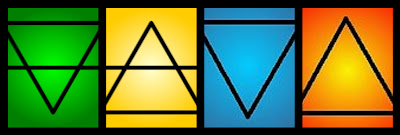
The stone the builders rejected has become the Cornerstone. By the LORD this has been done and it is woderful in our eyes.
- Psalm 118:22-23
Introduction to the Cornerstone
The following Biblical passages ahould help readers gain a better overall understanding of the term 'Cornerstone' and its relationship to both the Bible and Judeo-Christian symbolism. Included below is a concise list of Scriptural verses which mention the Cornerstone by name. They are as follows:
You also, like living stones, are being built into a spiritual house to be a holy priesthood, offering spiritual sacrifices acceptable to God through Jesus Christ. For in Scripture it says: 'See, I lay a stone in Zion, a chosen and precious Cornerstone, and the one who trusts in him will never be put to shame.' Now to you who believe, this stone is precious. But to those who do not believe, 'The stone the builders rejected has become the Cornerstone.
-1 Peter 2:5-7
Consequently, you are no longer foreigners and strangers, but fellow citizens with God’s people and also members of His household, built on the foundation of the apostles and prophets, with Christ Jesus Himself as the chief Cornerstone. In Him the whole building is joined together and rises to become a holy temple in the Lord.
- Ephesians 2:19-21
Then know this, you and all the people of Israel: It is by the name of Jesus Christ of Nazareth, whom you crucified but whom God raised from the dead, that this man stands before you healed. Jesus is ‘the stone you builders rejected which has become the Cornerstone.
- Acts 4:10-12
Jesus looked directly at them and asked, “Then what is the meaning of that which is written: 'The stone the builders rejected has become the Cornerstone?' Everyone who falls on that stone will be broken to pieces; anyone on whom it falls will be crushed."
- Luke 20:17-18
Haven’t you read this passage of Scripture: 'The stone the builders rejected has become the Cornerstone. The Lord has done this, and it is marvelous in our eyes’?”
- Mark 12:10-11
Jesus said to them, “Have you never read in the Scriptures: ‘The stone the builders rejected has become the Cornerstone. The Lord has done this and it is marvelous in our eyes’? Therefore I tell you that the kingdom of God will be taken away from you and given to a people who will produce its fruit."
- Matthew 21:42-43
'I am against you, you destroying mountain, you who destroy the whole earth,' declares the LORD. 'I will stretch out my hand against you, roll you off the cliffs, and make you a burned-out mountain. No rock will be taken from you for a Cornerstone, nor any stone for a foundation, for you will be desolate forever,' declares the LORD.
- Jeremiah 51:25-27
This is what the Sovereign LORD says: “See, I lay a stone in Zion, a tested stone, a precious Cornerstone for a sure foundation; the one who relies on it will never be stricken with panic.'
- Isaiah 28:16
From Judah will come the Cornerstone, from him the tent peg, from him the battle bow, from him every ruler.
- Zechariah 10:4
The princes of Zoan have acted foolishly. The princes of Memphis are deluded. Those who are the Cornerstone of her tribes have led Egypt astray.
- Isaiah 19:13
I will give you thanks, for you answered me, you have become my salvation. The stone the builders rejected has become the Cornerstone, the LORD has done this, and it is marvelous in our eyes.
- Psalm 118:21-23
Who marked off its dimensions? Surely you know! Who stretched a measuring line across it? On what were its footings set, or who laid its Cornerstone while the morning stars sang together and all the angels shouted for joy?
- Job 38:5-7
May the LORD God bless you in the name of the Judeo-Christian tradition.
























